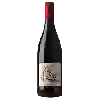The Cave des Vignerons de Saint-Chinian of Languedoc of Languedoc-Roussillon

The Cave des Vignerons de Saint-Chinian is one of the best wineries to follow in Languedoc.. It offers 86 wines for sale in of Languedoc to come and discover on site or to buy online.

























































